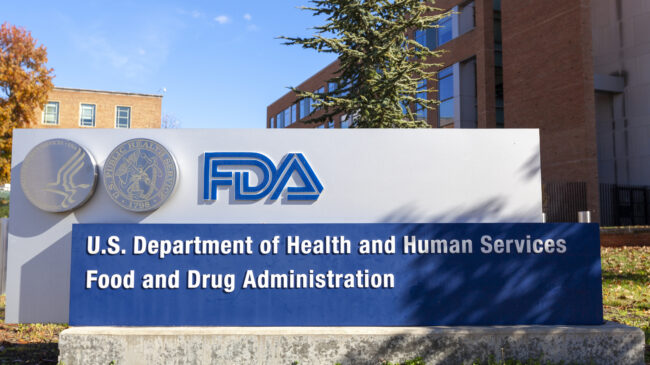Millions of consumers have been misinformed about the risks of e-cigarettes and denied access to the majority of these alternatives to smoking. Now Congress is intervening to potentially hold the Food and Drug Administration (FDA) accountable for its role in the misinformation.
Thanks to the FDA, the market for alternatives like e-cigarettes is in a state of severe dysfunction. In December, the Reagan-Udall Foundation (RUF), an independent organization created by Congress to assist the FDA with recommendations for modernizing research and product development, evaluated the FDA’s performance as a tobacco regulator. RUF found the agency has struggled to function as a regulator. The report found that the FDA underestimated the volume of e-cigarette product applications it would have to review, communicated poorly and inconsistently with the industry, and has no clear goal regarding tobacco and nicotine regulation.
Rep. James Comer (R–KY), chairman of the House Oversight and Accountability Committee, sent a letter to FDA Commissioner Robert Califf on March 28. The letter referenced the RUF report and informed Califf the committee is investigating the agency’s regulation of tobacco and nicotine products through its Center for Tobacco Products (CTP). Comer is requesting a host of documents, including all communications the FDA had with the White House, communications with third-party groups regarding tobacco policy decisions, and comments FDA staff made to the RUF.
Many suspect the FDA’s decisions on e-cigarette applications are heavily influenced by political pressure from vocal vaping opponents, such as Sen. Dick Durbin (D–Ill.) and those within the FDA who favor a prohibition approach rather than a harm-reduction approach to tobacco regulation.
Since 2009, tobacco products have been regulated by the FDA. In 2016, e-cigarettes were deemed tobacco products by the agency. All tobacco products not on the market before February 2007 must undergo an expensive and time-consuming application process to be authorized for sale. To be approved by the FDA, each product must demonstrate it is “appropriate for the protection of public health,” meaning it presents a net public health benefit for users and non-users.
The FDA has denied more than 99 percent of e-cigarette applications thus far, claiming applicants failed to provide sufficient evidence that they would benefit public health. But the FDA’s lack of guidance to applicants, opacity in decision-making, and blanket denial of all products flavored other than tobacco—effectively introducing a product standard without going through notice and comment rulemaking, a legal requirement of the Administrative Procedures Act—leaves the agency dangerously exposed to litigation.
As a result, dozens of companies have taken legal action against the FDA for failing to properly examine the science provided within their applications and switching criteria for what studies would be needed for a successful application without notifying stakeholders. One of these cases may end up in the Supreme Court.
Among RUF’s recommendations was for the FDA to provide a clear definition and interpretation of what constitutes “appropriate for the protection of public health” when evaluating product applications. The report also suggested the FDA make clear to the public whether it is making decisions on specific product applications about the underlying science or whether broader value judgments are being employed. Unfortunately, the FDA has yet to comply with these recommendations.
For years, the FDA has been under intense pressure from groups like the Campaign for Tobacco-Free Kids and the American Heart Association to take a more draconian approach to e-cigarette regulation, such as capping the amount of nicotine and banning all non-tobacco flavors. There’s some reason to believe these groups are granted special access to FDA officials that is denied to others. For example, when the RUF report was published, the FDA immediately held closed-door meetings with four organizations hostile to the sale of e-cigarettes as a tobacco harm-reduction tool. The FDA refused to say whether these meetings were held at the agency’s request. But Reason Foundation confirmed with the American Heart Association and the American Thoracic Society that the FDA initiated these discussions. No organizations supporting tobacco harm reduction were invited to discuss RUF’s findings with the FDA.
E-cigarettes are among the world’s most studied consumer products. Comprehensive research has shown e-cigarettes to be substantially safer than combustible cigarettes and more effective than nicotine replacement therapies at helping smokers quit smoking.
Congress should hold FDA’s feet to the fire and attempt to discover the roots of its failed regulatory policy, which has contributed to misinformation about e-cigarettes, and ignored research finding that “vaping products rather than smoking leads to a substantial reduction in exposure to toxicants that promote cancer, lung disease and cardiovascular disease,” and left smokers with fewer options to quit.
With the FDA embattled in the courts and the market awash with illicit tobacco products, perhaps this congressional action can start to lead the FDA to more thoughtful policies that embrace harm reduction.

